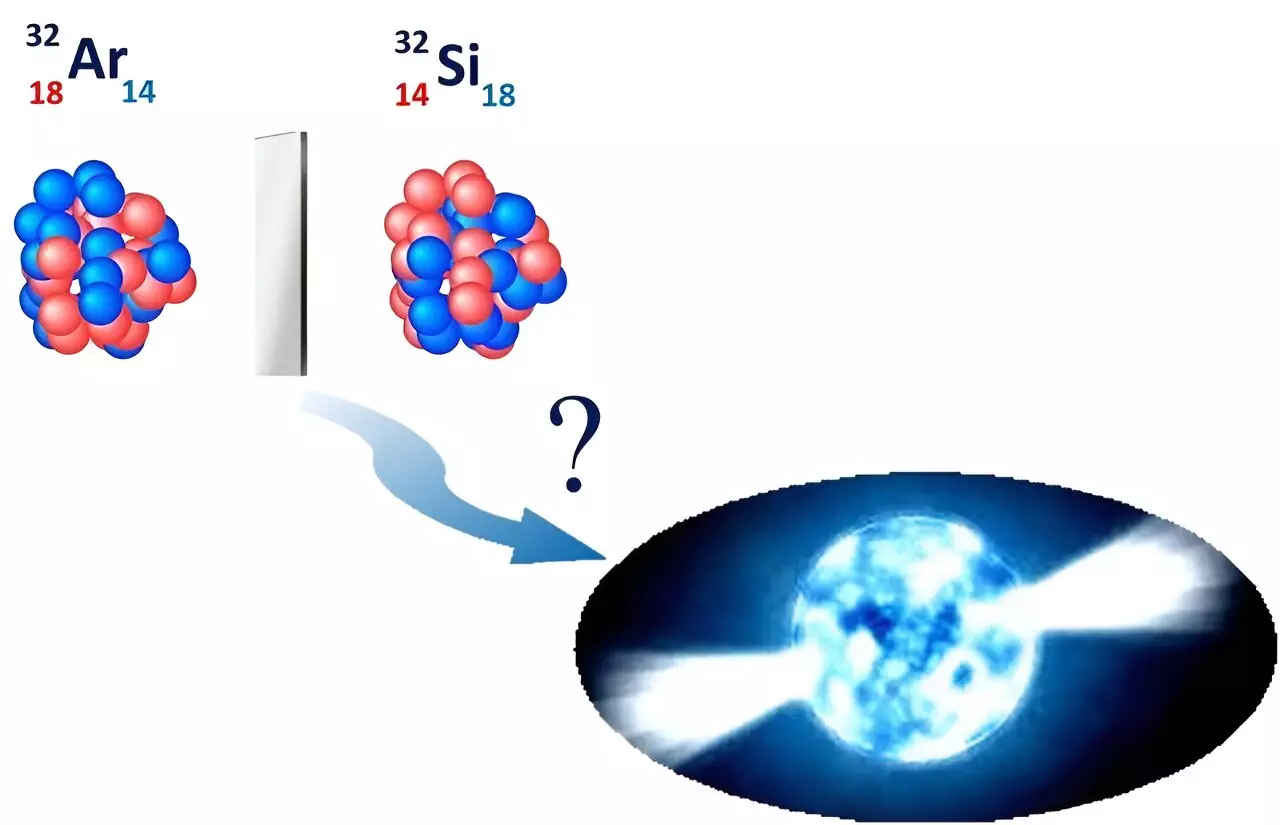The size of an atomic nucleus can be altered by the addition or removal of neutrons, resulting in changes in the energy levels of the atom’s electrons. These changes, known as isotope shifts, can be precisely measured to determine the radius of a nucleus. This information is crucial in advancing our understanding of nuclear physics and the properties of atomic nuclei.
A recent study focused on measuring the nuclear radii of stable silicon isotopes, including silicon-28, silicon-29, and silicon-30, as well as the unstable silicon-32 nucleus. By comparing the nuclear radius of silicon-32 with its mirror nucleus, argon-32, researchers were able to gain insights into the physics of astrophysical objects such as neutron stars. These findings contribute to the development of nuclear theory and provide valuable data for further research in the field.
Despite advancements in nuclear theory, scientists continue to face challenges in understanding the complexities of atomic nuclei. One major obstacle is the connection between nuclear size and the strong nuclear force. Additionally, there is uncertainty regarding the reliability of nuclear theories in describing nuclear matter, especially in extreme conditions like those found in neutron stars. Precision measurements of charge radii play a critical role in addressing these unresolved questions and pushing the boundaries of nuclear physics.
The researchers in this study utilized laser spectroscopy measurements at the BEam COoler and LAser spectroscopy facility (BECOLA) at the Facility for Rare Isotope Beams (FRIB) at Michigan State University. By measuring atomic isotope shifts in silicon isotopes, they were able to determine the nuclear radius and establish important benchmarks for nuclear theory development. The comparison of nuclear radii between silicon-32 and argon-32 provided valuable insights into the properties of dense neutron matter within neutron stars.
The results of this study align with constraints from gravitational wave observations and other observational data, underscoring the significance of nuclear radius measurements in advancing our understanding of neutron stars and nuclear physics. By continuing to refine experimental techniques and theoretical models, researchers can further explore the intricate nature of atomic nuclei and their role in astrophysical phenomena. This collaborative effort between experimental and theoretical physicists sheds light on fundamental questions about the nature of matter and the forces that govern the universe.


Leave a Reply